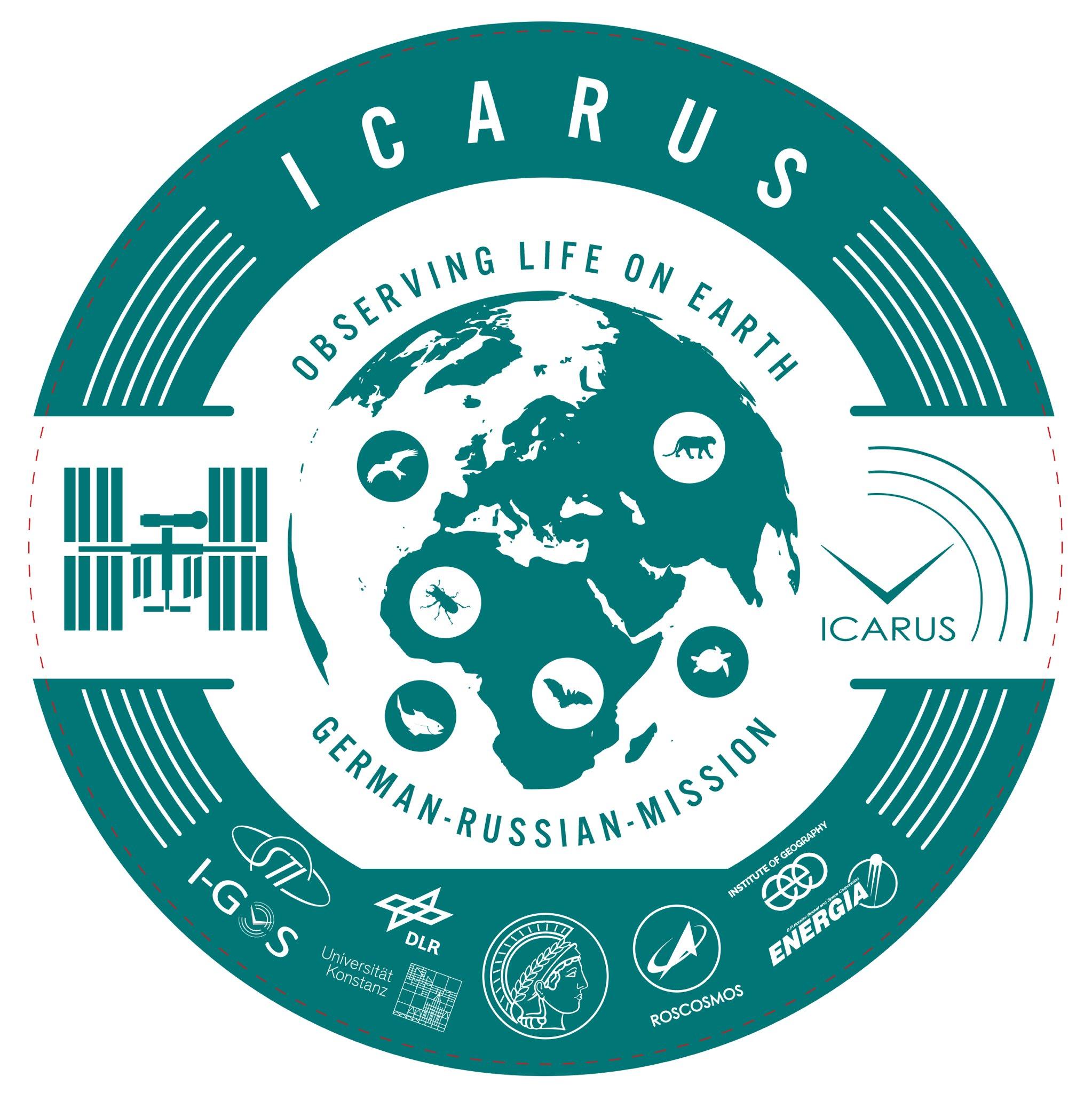This week, we're celebrating World Wildlife Day by asking our community to share photos showing how they are using tech in the field or the lab, using the #Tech4Wildlife hastag. We're already seeing some fantastic entries: proximity loggers on Tasmanian Devils giving info about facial tumor disease, open source sensors monitoring penguin colonies in Antarctica, Smart Parks in Africa, drones to study orangutan nesting habits and camera traps being used to connect kids to conservation. How are you using #tech4wildlife?
To participate this year, all you need to do is:
- Take a photo of how you are using tech to save wildlife
- Share it on Twitter: tell us a bit about your work and the tech featured
- Remember to use the hashtag #Tech4Wildlife and tag us at @WILDLABSNET
In the first two years of the challenge, our community has shared hundreds of photos and videos from the field. We've had over 3,500 tweets around the hashtag, with more than 300 photos and videos posted. We've seen everything: robot cheetahs, acoustic bat recorders in the middle of New York City, a mobile frog lab, apps for monitoring ivory stocks, camera for monitoring polar bear dens and portable DNA sequencers.
It was difficult to pick just ten favourites from last year's entries, but here they are!
10. Elizabeth Spencer: Camera Trapping in Selati Game Reserve
Kicking off our top ten is Elizabeth Spencer, with her light-hearted entries from her work using camera traps in the Selati Game Reserve.
Whilst the Big 5 are exciting it is important not to forget the humble impala...so elegant...so graceful #selatigamereserve #tech4wildlife pic.twitter.com/sxeAqyhTyM
— Elizabeth Spencer (@Jizzjazz1980) March 9, 2017
TFW all your camera boxes have tenants that either run up your arm or jump in your face! #tech4wildlife #iwasscreaminglikeamarine pic.twitter.com/qtmLg5EN40
— Elizabeth Spencer (@Jizzjazz1980) March 31, 2017
9. Ruchira Somaweera: Uncovering secretive behaviour of crocodiles
Entries to the #Tech4Wildlife photo challenge often feature charismatic species, so it was interesting to see how Ruchira Somaweera is using technology to further our understanding of crocodiles.
#remotecamera use to study secretive parental care behaviors of #crocodiles. https://t.co/AisIeMZFdl #tech4wildlife @WILDLABSNET pic.twitter.com/tEUqc7HCYV
— Ruchira Somaweera (@RuSomaweera) March 3, 2017
For a better understanding of bite forces in juveline #crocodiles. #tech4wildlife @WILDLABSNET pic.twitter.com/xfH3kc1tTI
— Ruchira Somaweera (@RuSomaweera) March 3, 2017
8. Emma Checkley: Bio-acoustics for understanding Big Cat Vocal Communication
Emma Checkley requisitioned tech normally used for avian bioacoustic monitoring and put it to use in her work researching big cat communication.
Recording lion roars using avian bioacoustic recording devices for my research of big cat vocal communication.#Tech4Wildlife @WILDLABSNET pic.twitter.com/qEPKvhCoQn
— Emma Checkley (@EmmaCheckley11) March 3, 2017
Analysing sonograms of lion roars using phonetics software, with a 4x4 for a desk, in the African bushveld. #Tech4Wildlife @WILDLABSNET pic.twitter.com/Qjtr7vpyh1
— Emma Checkley (@EmmaCheckley11) March 3, 2017
7. Alasdair Davies: Raspberry Pi Sea Turtle Tags
Current efforts to track endangered Green Sea Turtles rely on tags that cost upward of $2000 per unit. Alasdair Davies is developing an open source green sea turtle 'pit stop' tag, with the aim of dramatically reducing the cost of tagging turtles. Find out more about the project in this case study.
Thanks to the @Raspberry_Pi releasing the Zero W we can now get status pings from the video sea turtle tags live on the beach #tech4wildlife pic.twitter.com/Lpm7D6mB0x
— Alasdair Davies (@Al2kA) March 7, 2017
6. eMammal Project: Camera Traps and Citizen Science to Study Mammals
eMammal works with citizen scientists and camera traps to conduct large scale mammal surveys coordinated by NC Museum of Natural Sciences and the Smithsonian. It's a data management system and archive for camera trap research projects, a tool designed to not only be useful to scientists, but also to the citizen scientists who aid scientists in photo collection. Camera trappers use their software to look at pictures, identify animals and upload them for review and archive at the Smithsonian.
We use #citizenscience camera trapping to study mammals around the world! #Tech4Wildlife @WILDLABSNET #WorldWildlifeDay pic.twitter.com/d6bQWfBnKn
— eMammal Project (@eMammal) March 4, 2017
We engage #cameratrap to help students learn $ identify animals around them as we do #conservation#tech4wildlife @eMammal @mpalalive pic.twitter.com/j9ymjmhqJ6
— EVERLYN KIMULI (@everlyn_k) May 31, 2017
5. Ollie Wearn: Researching poorly known Cuban Greater Funnel-Eared Bat
The Edge of Existence programme highlights and protects some of the most unique species on the planet, which are on the verge of extinction. Edge species, like the Cuban Greater Funnel-Eared Bat, are Evolutionarily Distinct and Globally Endangered. Ollie Wearn shared some of the ways in which their Cuba team is using tech to create 3D maps of bat caves, survey for invasives, and monitor bats. His contribution also included the Soundtrap, a precursor the Audiomoth acoustic monitoring device.
The @EDGEofExistence Cuba team also used #tech4wildlife to 3D map a bat cave using 'structure from motion', & survey for invasives #EDBE2017 pic.twitter.com/V1uY15AAFM
— Ollie Wearn (@olliewearn) March 3, 2017
We're using #tech4wildlife to do research on the poorly known Cuban greater funnel-eared bat, a priority @EDGEofExistence species #EDBE2017 pic.twitter.com/c9h3BBiWoF
— Ollie Wearn (@olliewearn) March 3, 2017
4. Project Pelican: Pelican Energetics
The Project Pelican team is researching the ecology of Brown Pelicans in the northern Gulf of Mexico, with a goal of informing a better development of the oil and gas industry in the region. Their team uses a range of tech: heart rate monitors, satellite tracking to study the movement of adults and color bands to study the dispersal and survival of juveniles during the winter months.
Their entry into the photo challenge caught our attention because it was a detailed walkthrough of both why they are using the heart rate monitors and how the data collected can be used to understand energy use and metabolic rates of pelican chicks. In particular, we liked that they ended with a call to action that highlighted the outstanding questions and invited collaborators. Find out more about the project here.
Our #tech4wildlife: heart-rate monitors to estimate energy used everyday by #pelican chicks on coastal Alabama, USA. pic.twitter.com/jc5GXmJEji
— Project Pelican (@project_pelican) March 3, 2017
Heart rates give us an idea of O2 consumption, which we use to estimate the pelican's metabolic rate https://t.co/e973PRN0ya#tech4wildlife
— Project Pelican (@project_pelican) March 3, 2017
Metabolic rate can be converted to energy use and energy requirements: how many calories does a pelican chick need everyday? #tech4wildlife
— Project Pelican (@project_pelican) March 3, 2017
To know if chicks are fed enough, we do diet studies:
— Project Pelican (@project_pelican) March 3, 2017
1 Collect pelican diet
2 Weigh, mesure, ID
3 Mesure calory content#tech4wildlife pic.twitter.com/CF0gaQgxhf
Finally, we record how many times chicks are fed each day.
— Project Pelican (@project_pelican) March 3, 2017
This is done with the good old #tech4wildlife: binoculars and patience! pic.twitter.com/EtnuOLERjy
Now we have
— Project Pelican (@project_pelican) March 3, 2017
- # feedings/day
- mass of food
- calory/mass of food
We can calculate how many calories/day a pelican chick gets#tech4wildlife
Like for current set-ups using RFID in birds, a nest station gathers + saves nesting data, then sends them to a base station.#tech4wildlife pic.twitter.com/IWCtgSiSqx
— Project Pelican (@project_pelican) March 3, 2017
We've got it almost working but we need help to finish the project: any computer scientist interested in #tech4wildlife for #seabirds? pic.twitter.com/SA5oHIZ7bI
— Project Pelican (@project_pelican) March 3, 2017
Honorable Mention: Maria Gatta
While not a specific post sharing how Maria is using #tech4wildlife, her amazed (and slightly jealous) reaction to the news that a team managed to collar more than 100 bears was one that any conservationist could identify with. The ensuing discussion about sample sizes and collar accessibility was also illuminating, securing her an honorable mention in our countdown.
— Maria Gatta (@M_Gatta) March 7, 2017
Saying I'm jealous doesn't even begin to cover it... pic.twitter.com/DvD1ApTHDJ
— Maria Gatta (@M_Gatta) March 7, 2017
Yes, commercial collars. pic.twitter.com/YOO1QP8UmV
— Maria Gatta (@M_Gatta) March 7, 2017
3. Erebus Project: Developing Drones for Bat research
Tom and Tom of Project Erebus are investigating drones as a tool for acoustic monitoring in bat work. They have successfully shown that bats can be acoustically recorded from drones - see the recordings of the quad here, plane here and boat here. If you're interested in using drones for acoustic monitoring of species, their project website is full of fantastic information.
We use different types of #drone to monitor #bats and investigate unique research possibilities and applications @WILDLABSNET #tech4wildlife pic.twitter.com/kqhzjiv1Y8
— Tom&Tom (@project_erebus) March 3, 2017
Thanks; yes it's all acoustic. We like #openscience so all info is available here: https://t.co/QHNPN8zCYa
— Tom&Tom (@project_erebus) March 3, 2017
Developing drones for #bat research has been a stories of ups... and nose-downs! #tech4wildlife @WILDLABSNET https://t.co/QHNPN8zCYa pic.twitter.com/5ZaAotofqG
— Tom&Tom (@project_erebus) March 3, 2017
2. Arjun Dheer: Conflict and Interactions between Spotted Hyenas and Pastoralists in the Ngorongoro Conservation Area
Arjun Dheer used World Wildlife Day to share his conservation career path with a series of photos explaining his journey from a BSc in Wildlife Ecology and Management to his current work looking into conflict and interactions between spotted hyenas and pastoralists in the Ngorongor Conservation Area. His photos were spectacular and it was fascinating to see the challenges he faced deploying collars onto skittish hyena.
My research on African predators has relied on GPS collars, radio collars, and camera traps. #WorldWildlifeDay #Tech4Wildlife pic.twitter.com/HLtLDch57D
— Arjun Dheer (@ArjDheer) March 3, 2017
I did my BSc in Wildlife Ecol & Mgmt & spent a semester in E Africa which sparked my interest in carnivore ecology. #WorldWildlifeDay pic.twitter.com/tHKbocBfIg
— Arjun Dheer (@ArjDheer) March 3, 2017
I was very lucky to get these positions. And I learned tons of new skills such as wildlife telemetry and off road driving #WorldWildlifeDay pic.twitter.com/Wc1Zxf6K4C
— Arjun Dheer (@ArjDheer) March 3, 2017
Last year I did my MRes on dietary & spatiotemporal resource partitioning between hyenas & lions in central Kenya #WorldWildlifeDay pic.twitter.com/dIdm17daVp
— Arjun Dheer (@ArjDheer) March 3, 2017
My next step? A PhD on conflict & interactions between spotted hyenas & pastoralists in the Ngorongoro Conservation Area. #WorldWildlifeDay pic.twitter.com/EZIQiKbUX5
— Arjun Dheer (@ArjDheer) March 3, 2017
also, in order to deploy collars on nervous/skittish hyenas, I've of course needed to trap them! #WorldWildlifeDay #Tech4Wildlife pic.twitter.com/41Ysy5ttlY
— Arjun Dheer (@ArjDheer) March 3, 2017
The 1st hyena I ever collared is in the above video. I named him Utalii, meaning tourist #WorldWildlifeDay #tech4wildlife pic.twitter.com/6owfMjlIsk
— Arjun Dheer (@ArjDheer) March 3, 2017
with GPS data from collars, I am able to find the hyena clans' communal and natal dens #tech4wildlife #WorldWildlifeDay pic.twitter.com/yiiNPiVAY9
— Arjun Dheer (@ArjDheer) March 3, 2017
and the communal den is the activity center of a spotted hyena clan's social life. Pictured here is a scene I woke up to. #WorldWildlifeDay pic.twitter.com/ZBg3NBXxi8
— Arjun Dheer (@ArjDheer) March 3, 2017
And that a wrap, folks. If you want true hyena expertise, please be sure to also check out @HyenaProject! Lots of exciting things to come! pic.twitter.com/WFsNRaEAKB
— Arjun Dheer (@ArjDheer) March 3, 2017
1. Roland Kays: The Icarus Initative Wildlife Tracking Antenna Destined for the International Space Station
Roland Kays was a prolific participant in both the 2016 and 2017 #Tech4Wildlife Photo Challenge, sharing photos of everything from camera trapping, sound and image processing, and a variety of tracking devices. But the most impressive photo had to be of the giant ICARUS Initative Antenna, destined for the International Space Station.
The goal of the ICARUS (International Cooperation for Animal Research Using Space) Initiative is to observe global migratory movements of small animals through a satellite system. And the Antenna Block was launched from Baikonur just a few weeks ago on 11 February 2018, and twitter was full of excited posts about the launch. Follow along with the ICARUS initative on their website.
#Icarusinitiative antenna that will be mounted on the #ISS this year 4 #AnimalTracking https://t.co/HHPzJ5mzlj #Tech4Wildlife @WILDLABSNET pic.twitter.com/bsU4lOLPov
— Roland Kays (@RolandKays) March 3, 2017
How are you using #Tech4Wildlife?
Our third annual #Tech4Wildlife Photo Challenge is running all this week. Are you using technology in your work? We want to hear from you: snap a pic and post it with the #Tech4Wildlife hashtag. We can't wait to check out the photos you post!







Add the first post in this thread.